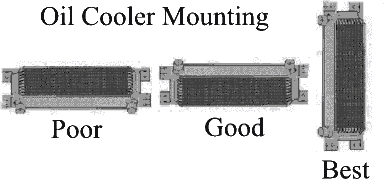I realised I didn't have a simple post anywhere about my oil cooler to link people to.

.

.

so, 2 1/2 years late, here's what I built.

I'm very happy with it and, given my limited fabrication skills, I think it's a pretty neat install even if i do say so myself! And it goes without saying that this doesn't work with a side-mount intercooler.

.

.

in my case I have an ST205 charge cooler.


I used the following:
17 Row Oil Cooler

(260x230x32mm from ebay)
The standard SMIC shroud
Thermostatic sandwich plate

(1/2"BSP fittings)
AN-10 right angle fitting
AN-10 180º fitting
2x AN-10 straight fittings
2x AN-10 to 1/2" BSP
3m AN-10 nylon braided hose

(I think 2m will suffice though, but not 100% sure)
Some random rubber seals
Some metal sheet
Some nuts and bolts

I mocked up the cooler on the shroud:


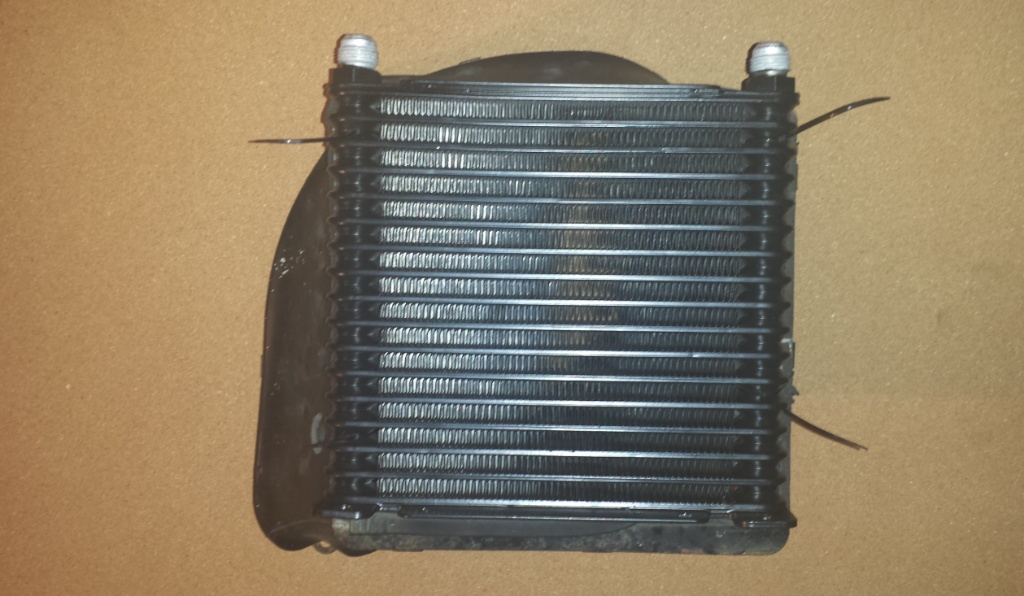



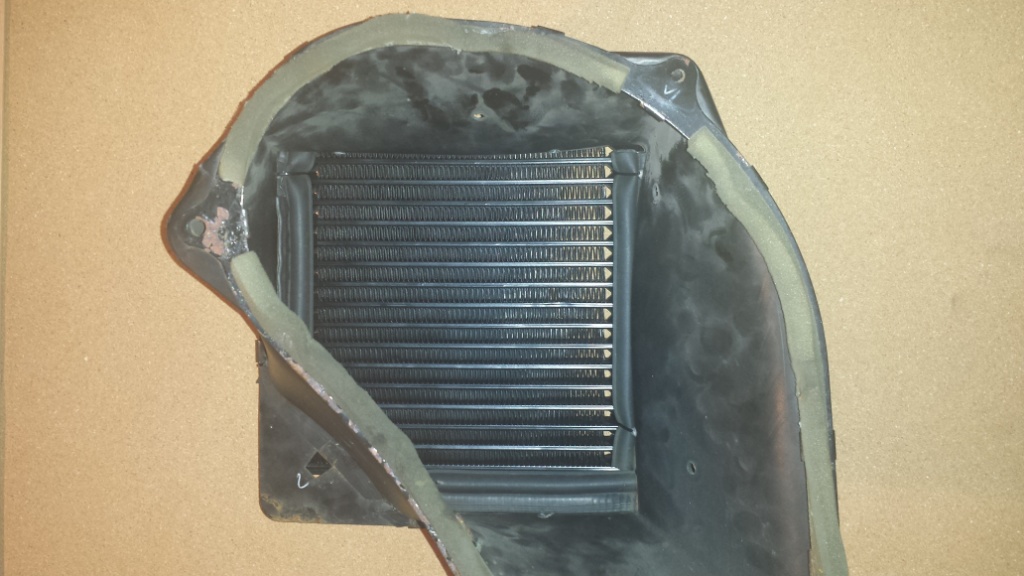



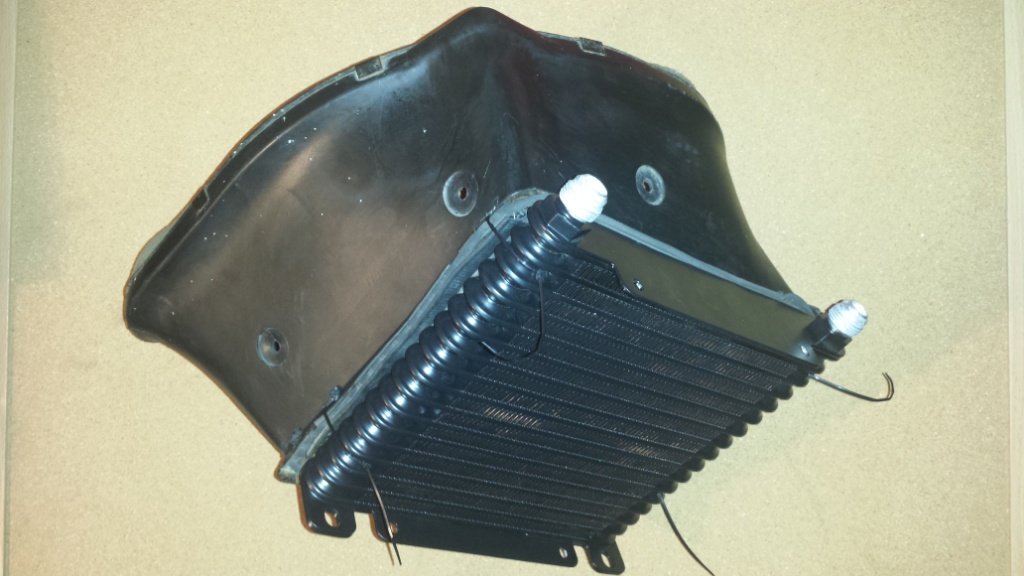


I cut the metal sheet to make brackets to attach the cooler to the shroud then cut and assembled the hoses to the lengths I thought I needed.

.

which both turned out to be a foot too long!


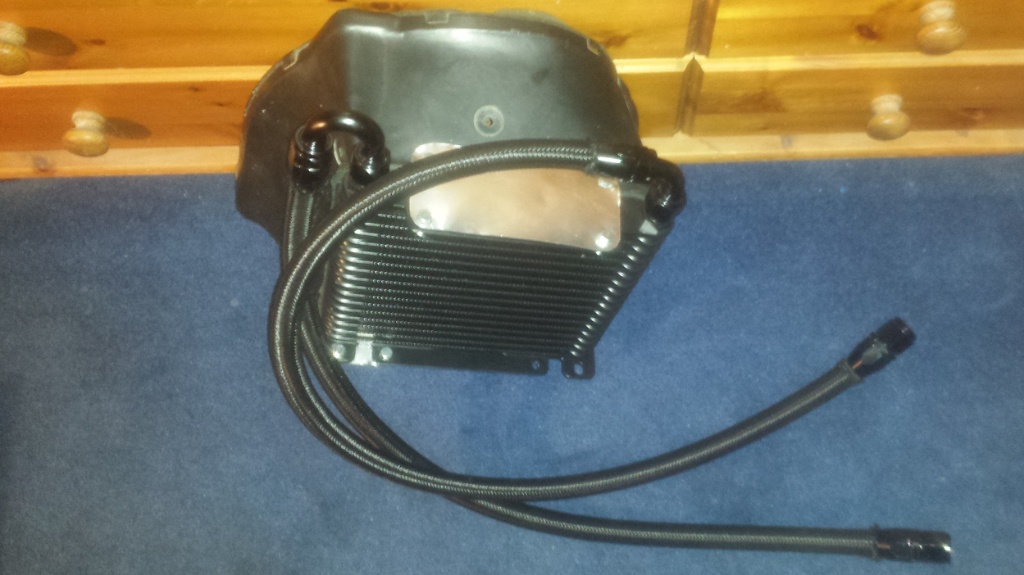


I sprayed the DIY

brackets black to match everything else and then wrestled the shroud and cooler into the engine bay:


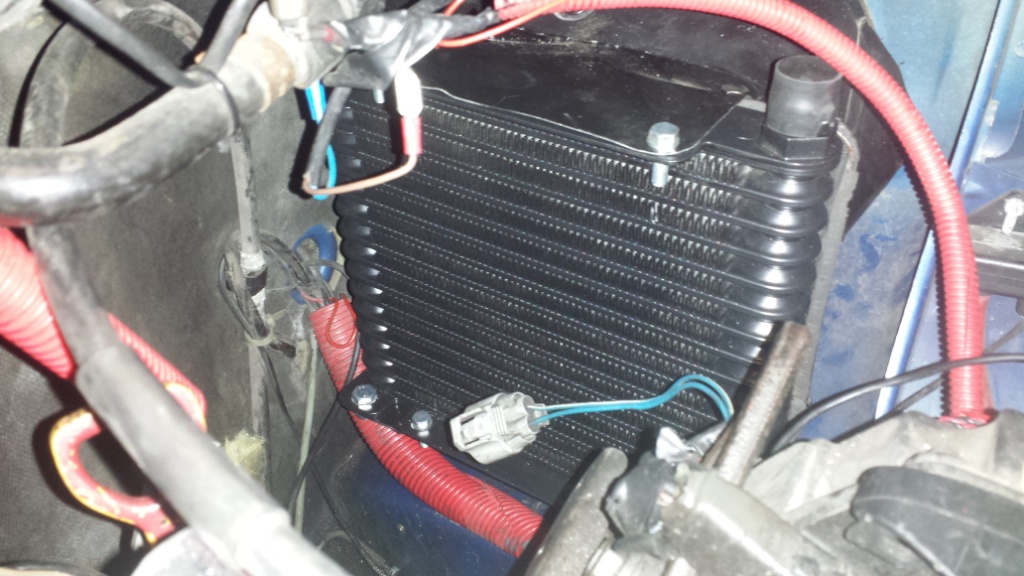


Finally, I trimmed and reassembled the hoses and connected them up to the car:


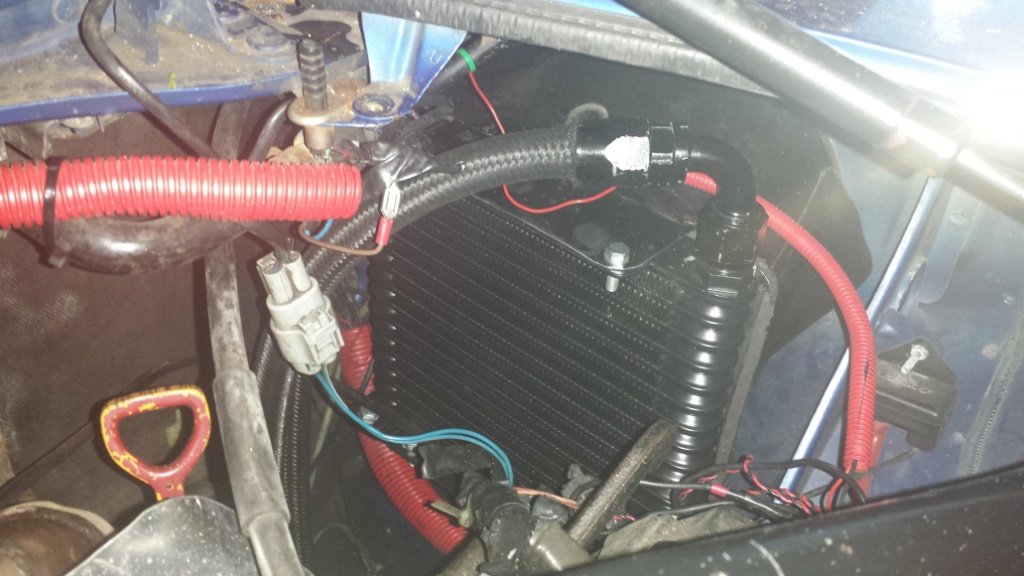


The thermostatic sandwich plate is a very tight fit on the sump.

Rotating it 90º and using 90º AN adaptors would probably have been better.


(Aaah, hindsight, you're a wonderful thing)


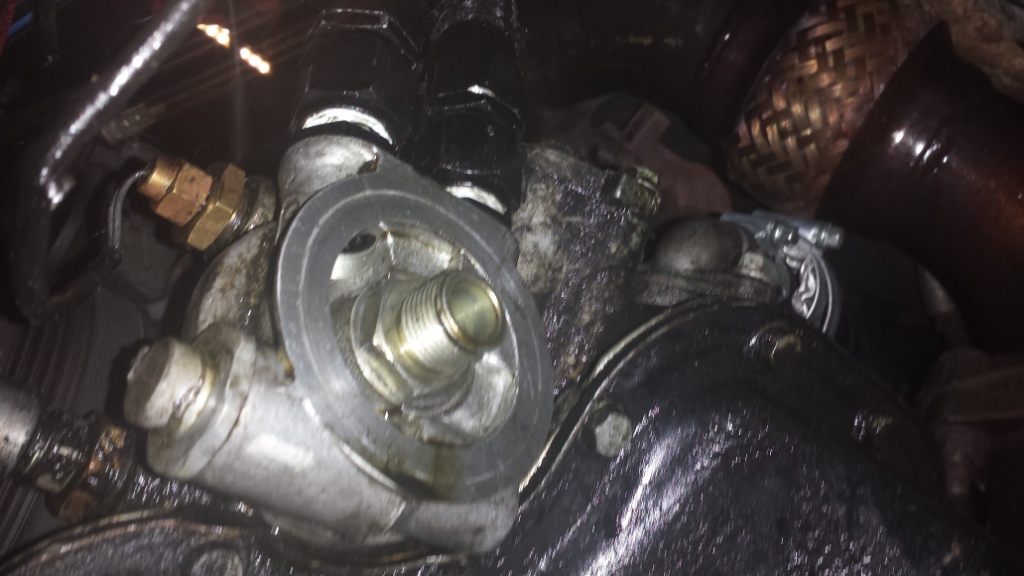


The cooling is excellent and the oil cooler is nicely tucked away from any potential damage.

.

.

the chances of getting a stone in the side vent is pretty low! Unlike intercooling, you've got a massive temperature difference between the oil and the air, so a position that's barely sufficient for intercooling is more than enough for oil.


As an aside, my thermostatic sandwich plate doesn't have ports for sensors.

To avoid using two sandwich plates

(which sounds pretty sketchy to me!) I was advised these ports existing in the rev3+ oil pans:


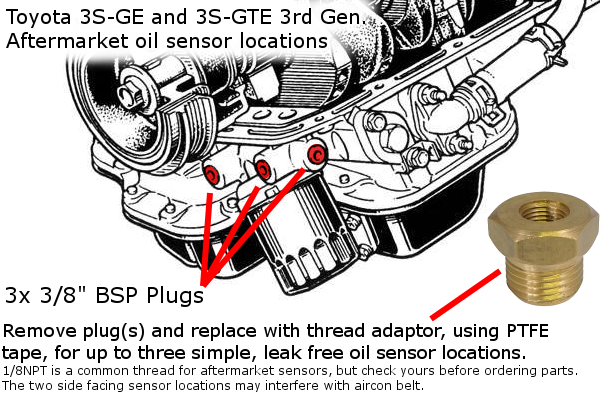


These ports are 3/8 BSP so simple threaded adaptors to convert to the size of your sensors

(most often 1/8 NPT) plus some PTFE tape sorts our any oil sensors you have.


(I admit I've posted this numerous times, but it's very pertinent here)








